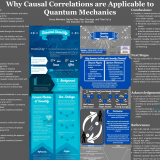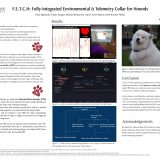
Why Causal Correlations are Applicable to Quantum Mechanics Marc Domingo, Nathan Ree, Thao Vy Le
May 11, 2021
When the concept of causality is thought of within a non-physics based context, it is typically thought of as the relationship between “cause” and “effect” or simply as the idea that something results in a subsequent event occurring. However, when brought into the context of physics, one must account for the two types of mechanics within the realm of physics–classical, or the behavior of objects in the natural viewable world (macro scale), and quantum, the behavior of subatomic particles (micro scale). This project seeks to explain causality in terms of classical mechanics and subsequently explain why in spite of conflicts between the behavior of quantum particles and the behavior of the world defined by classical physics, that causality in a classical sense can be applicable to quantum mechanics. Throughout the project, our group researched how the world is defined in terms of classical and quantum physics and met with Dr. Cristiano Silva, an expert in quantum physics whose current field of study is quantum causality, in order to discuss how causality can be defined within both contexts of physics. As a result, our group concluded that a causal correlation model that is typically associated with classical physics can be applied to quantum mechanics because the conflicts between the two aspects of physics is only apparent in nature, as observers of quantum behavior are bound by the limitations of classical mechanics.  Why Causal Correlations are Applicable to Quantum Mechanics Poster
Why Causal Correlations are Applicable to Quantum Mechanics Poster

